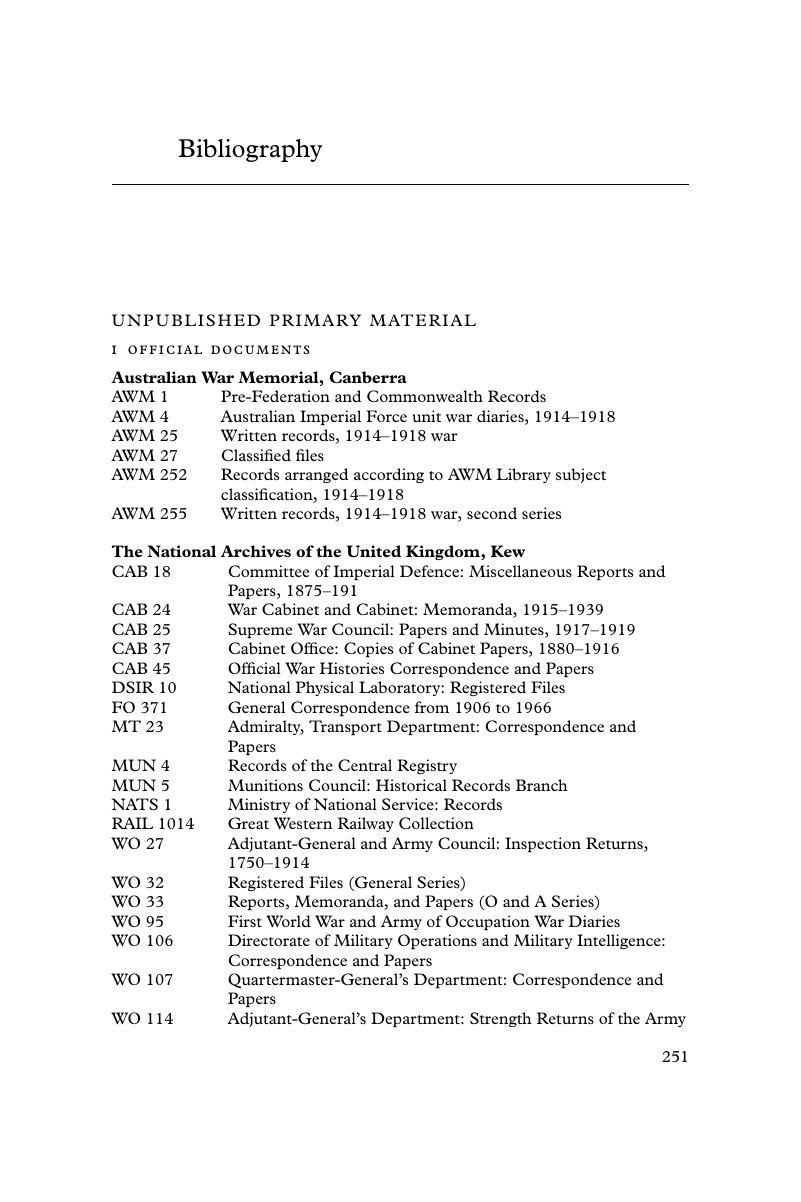Bibliography
Published online by Cambridge University Press: 24 November 2017
Summary

- Type
- Chapter
- Information
- Learning to FightMilitary Innovation and Change in the British Army, 1914–1918, pp. 251 - 271Publisher: Cambridge University PressPrint publication year: 2017



